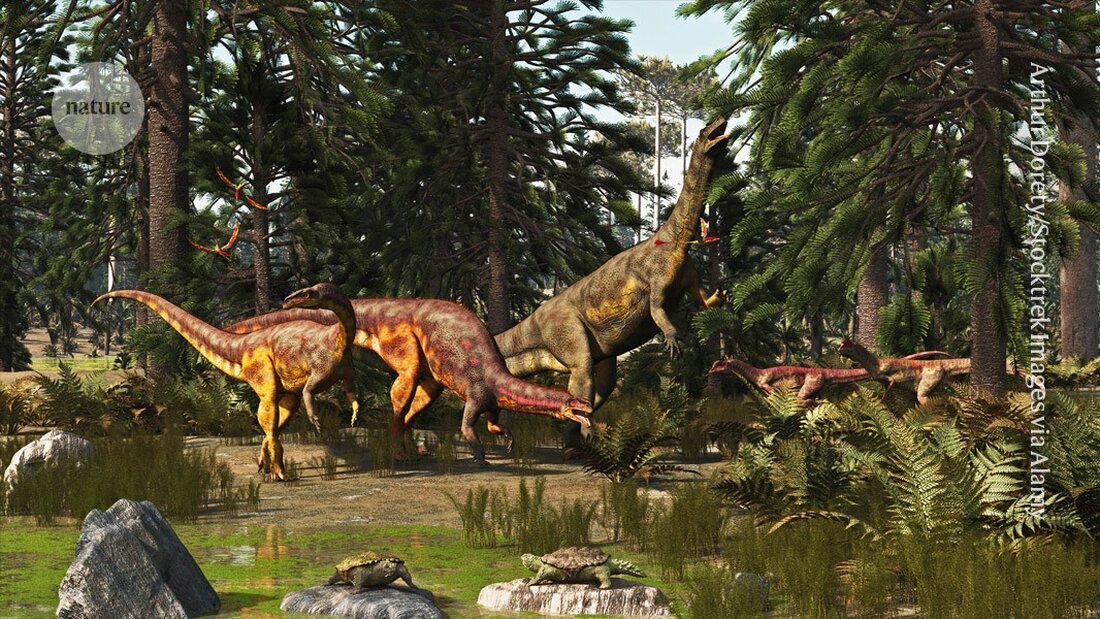Fossilized Excrement and Vomit: The Rise of Dinosaurs to Rule the Earth
Fossils of dinosaur feces and vomit reveal how the species evolved in the Late Triassic and came to dominance on Earth.

Fossilized Excrement and Vomit: The Rise of Dinosaurs to Rule the Earth
Fossils of feces and vomit provide insights into the evolution of dinosaur and show how they ruled the earth. The study, published November 27 in the journal Nature, analyzed hundreds of pieces of the fossilized digestive material, also called Bromalite, to reconstruct what dinosaurs ate and how their diet changed over time 1. The fossils show that the rise of dinosaurs over millions of years during the Triassic period was influenced by factors such as climate change and the extinction of other species.
“Our study shows that you can use seemingly insignificant fossils to achieve remarkable results,” says Martin Qvarnström, co-author of the study and a researcher on early dinosaur evolution at Uppsala University in Sweden.
Palaeontologists have developed different theories about how dinosaurs became the dominant species on Earth. Some believe that dinosaurs were superior to their rivals because they were particularly well adapted to a changing ecosystem or that random environmental changes gave them advantages over other species. However, a single hypothesis that fully explains the rise of dinosaurs does not exist.
What dinosaurs ate
To better understand the early evolution of dinosaurs, Qvarnström and his colleagues cut open and examined more than 500 bromalites from the Polish Basin in Central Europe. The fossils are estimated to be around 200 million years old.
The team used a variety of methods to analyze the bromalites and their contents, including various microscope methods and a technique called synchrotron microtomography, which uses a particle accelerator to reveal details of the fossils. In addition, chemical solutions were used to examine the exact contents of the remains, which included fish, plants and insects.
Although many of the fossils were very old and acidic, the team found numerous well-preserved insects that the dinosaurs had eaten. “Some were so beautiful in three dimensions and had all their antennae and legs intact,” reports Qvarnström.
The analysis of the digestive material allowed the researchers to “recreate these food webs, so who ate who in all these groups and observe this trend over such a long time interval,” explains Qvarnström.
Adapt or die
The team found that the number and diversity of the fossils' contents increased over time. This suggests that larger dinosaurs with more diverse diets became more important toward the end of the Triassic period (around 237 to 201 million years ago). By comparing the fossils with plant data from this period, the researchers determined that the rise of dinosaurs was characterized by both chance and adaptation. For example, climate change led to increased humidity, which changed the available vegetation. Dinosaurs were able to adapt to this changing climate and diet better than other land animals.
“What we learned is that the rise of dinosaurs took a long time and was really complex,” says Qvarnström.
“This is an impressive piece of work,” explains Suresh Singh, who studies paleoecological dynamics at the University of Bristol, UK. He adds that this is the first time he has seen such extensive research on bromalites.
Singh notes that dinosaurs are an important source of data for understanding how life adapts to different pressures, such as climate change.
He suggests that future research could use bromalites to study how dinosaurs evolved in different parts of the world. “Current studies suggest that dinosaurs first evolved in the southern hemisphere, and perhaps there is a different pattern there,” he says.
-
Qvarnström, M. et al. Nature https://doi.org/10.1038/s41586-024-08265-4 (2024).

 Suche
Suche
 Mein Konto
Mein Konto
